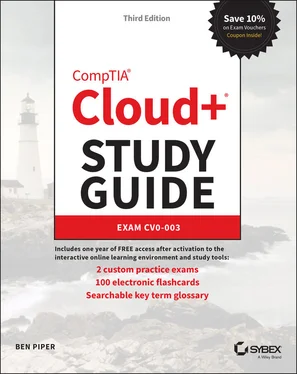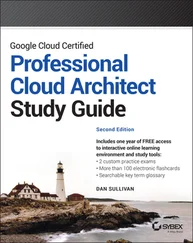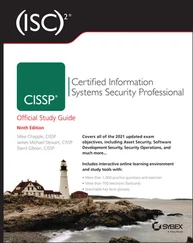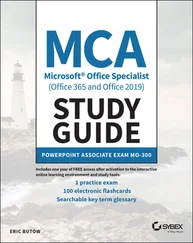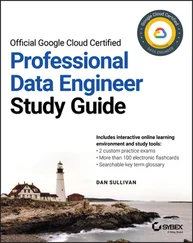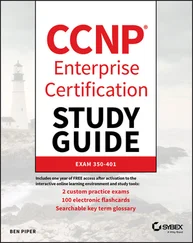1 Cover
2 Title Page
3 Copyright
4 Acknowledgments
5 About the Author
6 About the Technical Editor
7 Introduction Why Should You Become Certified in Cloud Technologies? What Does This Book Cover? Interactive Online Learning Environment and Test Bank How to Use This Book How Do You Go About Taking the Exam? Certification Exam Policies Tips for Taking Your Cloud+ Exam Cloud+ Exam Renewal CompTIA Cloud+ Study Guide: Exam CV0-003 Objective Map 1.0 Cloud Architecture and Design 2.0 Security 3.0 Deployment 4.0 Operations and Support 5.0 Troubleshooting Reader Support for This Book Assessment Test Answers to Assessment Test
8 Chapter 1: Introducing Cloud Computing Configurations and Deployments Introducing Cloud Computing Creating and Validating a Cloud Deployment Verifying System Requirements Summary Exam Essentials Written Lab Review Questions
9 Chapter 2: Cloud Deployments Executing a Cloud Deployment Matching Data Center Resources to Cloud Resources Configuring and Deploying Storage Performing a Server Migration Managing User Identities and Roles Summary Exam Essentials Written Lab Review Questions
10 Chapter 3: Security in the Cloud Cloud Security Compliance and Configurations Access Control Summary Exam Essentials Written Lab Review Questions
11 Chapter 4: Implementing Cloud Security Implementing Security in the Cloud Automating Cloud Security Summary Exam Essentials Written Lab Review Questions
12 Chapter 5: Maintaining Cloud Operations Applying Security Patches Updating Cloud Elements Storage Operations Summary Exam Essentials Written Lab Review Questions
13 Chapter 6: Disaster Recovery, Business Continuity, and Ongoing Maintenance Implementing a Disaster Recovery and Business Continuity Plan Business Continuity Cloud Maintenance Summary Exam Essentials Written Lab Review Questions
14 Chapter 7: Cloud Management Cloud Metrics Adding and Removing Cloud Resources Summary Exam Essentials Written Lab Review Questions
15 Chapter 8: Cloud Management Baselines, Performance, and SLAs Measuring Your Deployment Against the Baseline Summary Exam Essentials Written Lab Review Questions
16 Chapter 9: Troubleshooting Incident Management Troubleshooting Cloud Capacity Issues Troubleshooting Automation and Orchestration Summary Exam Essentials Written Lab Review Questions
17 Chapter 10: Troubleshooting Networking and Security Issues and Understanding Methodologies Troubleshooting Cloud Networking Issues Troubleshooting Security Issues Troubleshooting Methodology Summary Exam Essentials Written Lab Review Questions
18 Appendix A: Answers to Review Questions Chapter 1: Introducing Cloud Computing Configurations and Deployments Chapter 2: Cloud Deployments Chapter 3: Security in the Cloud Chapter 4: Implementing Cloud Security Chapter 5: Maintaining Cloud Operations Chapter 6: Disaster Recovery, Business Continuity, and Ongoing Maintenance Chapter 7: Cloud Management Chapter 8: Cloud Management Baselines, Performance, and SLAs Chapter 9: Troubleshooting Chapter 10: Troubleshooting Networking and Security Issues and Understanding Methodologies
19 Appendix B: Answers to Written Labs Chapter 1: Introducing Cloud Computing Configurations and Deployments Chapter 2: Cloud Deployments Chapter 3: Security in the Cloud Chapter 4: Implementing Cloud Security Chapter 5: Maintaining Cloud Operations Chapter 6: Disaster Recovery, Business Continuity, and Ongoing Maintenance Chapter 7: Cloud Management Chapter 8: Cloud Management Baselines, Performance, and SLAs Chapter 9: Troubleshooting Chapter 10: Troubleshooting Networking and Security Issues and Understanding Methodologies
20 Index
21 End User License Agreement
1 Chapter 2TABLE 2.1 Private IP address blocksTABLE 2.2 Role-based access control
2 Chapter 3TABLE 3.1 Major components of a PKI framework
3 Chapter 7TABLE 7.1 Cloud metric examples
1 Chapter 1 FIGURE 1.1 In-house computing FIGURE 1.2 Cloud computing model FIGURE 1.3 Mainframe computing FIGURE 1.4 Client-server computing FIGURE 1.5 Virtualized computing FIGURE 1.6 Cloud computing FIGURE 1.7 SaaS FIGURE 1.8 IaaS FIGURE 1.9 PaaS FIGURE 1.10 Public cloud FIGURE 1.11 Private cloud FIGURE 1.12 Community cloud FIGURE 1.13 Hybrid cloud FIGURE 1.14 Shared resource pooling FIGURE 1.15 Remote VPN access to a data center FIGURE 1.16 Site-to-site replication of data FIGURE 1.17 Synchronous replication FIGURE 1.18 Asynchronous replication FIGURE 1.19 Load balancing web servers FIGURE 1.20 Cloud regions FIGURE 1.21 Availability zones FIGURE 1.22 Local computer running the hypervisor management application FIGURE 1.23 Remote hypervisor management application FIGURE 1.24 Local computer running Remote Desktop Services to remotely acces... FIGURE 1.25 Secure Shell encrypted remote access
2 Chapter 2FIGURE 2.1 Managing your cloud deploymentFIGURE 2.2 The FCAPS management umbrellaFIGURE 2.3 Public cloudFIGURE 2.4 Private cloudFIGURE 2.5 Hybrid cloudFIGURE 2.6 Community cloudFIGURE 2.7 A VPN creates a secure tunnel over an insecure network such as th...FIGURE 2.8 Intrusion detection systems monitor incoming network traffic for ...FIGURE 2.9 Intrusion prevention systems monitor activity and prevent network...FIGURE 2.10 DMZ servers are accessed by the outside world via the Internet a...FIGURE 2.11 Network-attached storageFIGURE 2.12 Direct-attached storageFIGURE 2.13 Storage area networkFIGURE 2.14 RAID level 0FIGURE 2.15 RAID level 1FIGURE 2.16 RAID level 1+0FIGURE 2.17 RAID level 0+1FIGURE 2.18 RAID level 5FIGURE 2.19 RAID level 6FIGURE 2.20 Zoning filters access to storage resources on the SAN switching ...FIGURE 2.21 LUN masking filters initiator access to storage volumes on the s...FIGURE 2.22 Physical-to-virtual migrationFIGURE 2.23 Virtual-to-virtual migrationFIGURE 2.24 Virtual-to-physical migrationFIGURE 2.25 Storage migrationFIGURE 2.26 Load-balancing web serversFIGURE 2.27 Network firewall for securityFIGURE 2.28 Firewalls define what traffic is allowed in and out of the netwo...
3 Chapter 3FIGURE 3.1 IPsec tunnel from remote site to cloud data centerFIGURE 3.2 IaaS security modelFIGURE 3.3 PaaS security modelFIGURE 3.4 SaaS security model
4 Chapter 4FIGURE 4.1 Multifactor authentication login screenFIGURE 4.2 Hardware-based multifactor authentication tokenFIGURE 4.3 Smartphone-based multifactor authentication tokenFIGURE 4.4 Dashboard applications show cloud health reports using a browser....FIGURE 4.5 Firewalls define what traffic is allowed in and out of the networ...
5 Chapter 5FIGURE 5.1 Rolling updates are performed sequentially.FIGURE 5.2 Blue-green deploymentFIGURE 5.3 Cluster updates on each server with no downtimeFIGURE 5.4 Virtual machine snapshotFIGURE 5.5 Virtual machine cloningFIGURE 5.6 Image backupFIGURE 5.7 File backupFIGURE 5.8 Local backupFIGURE 5.9 Remote backup
6 Chapter 6FIGURE 6.1 Hot site mirroringFIGURE 6.2 Warm siteFIGURE 6.3 Cold siteFIGURE 6.4 Site-to-site replication of dataFIGURE 6.5 Synchronous replicationFIGURE 6.6 Asynchronous replication
7 Chapter 7FIGURE 7.1 Basic network management topologyFIGURE 7.2 Cloud notification systemFIGURE 7.3 Vertical scalingFIGURE 7.4 Horizontal scaling
8 Chapter 8FIGURE 8.1 Cloud object trackingFIGURE 8.2 CPU usage reportingFIGURE 8.3 Collecting trending dataFIGURE 8.4 Vertical scalingFIGURE 8.5 Horizontal scalingFIGURE 8.6 Cloud reporting
9 Chapter 10FIGURE 10.1 Latency is an end-to-end network delay.FIGURE 10.2 Console port accessFIGURE 10.3 Console port accessFIGURE 10.4 Local computer running the RDP application to remotely access a ...FIGURE 10.5 Secure Shell–encrypted remote accessFIGURE 10.6 Account privilege escalationFIGURE 10.7 Top-down troubleshooting approachFIGURE 10.8 Bottom-up troubleshooting approachFIGURE 10.9 Divide-and-conquer troubleshooting approach
Читать дальше
